#1921-1985
Photo
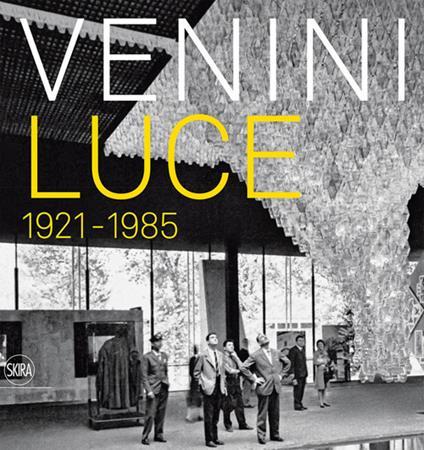
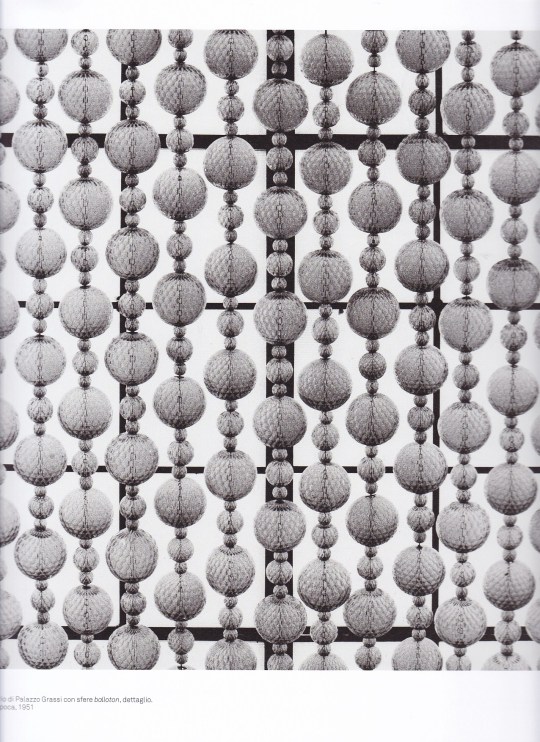


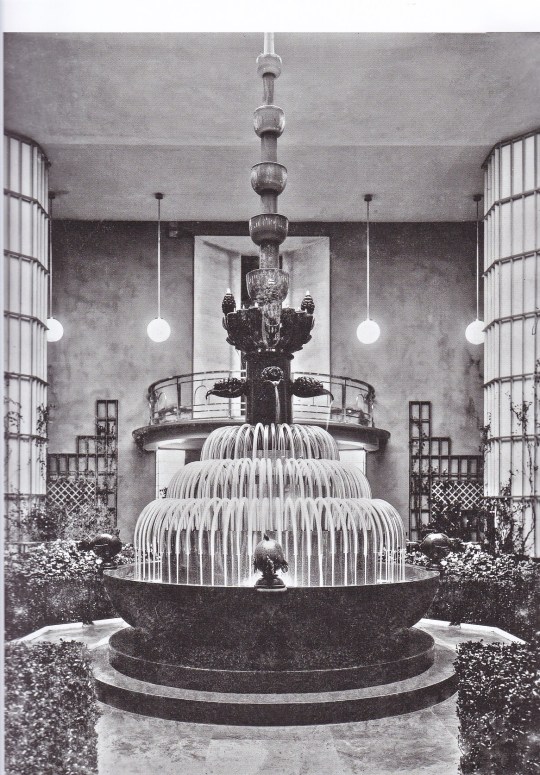

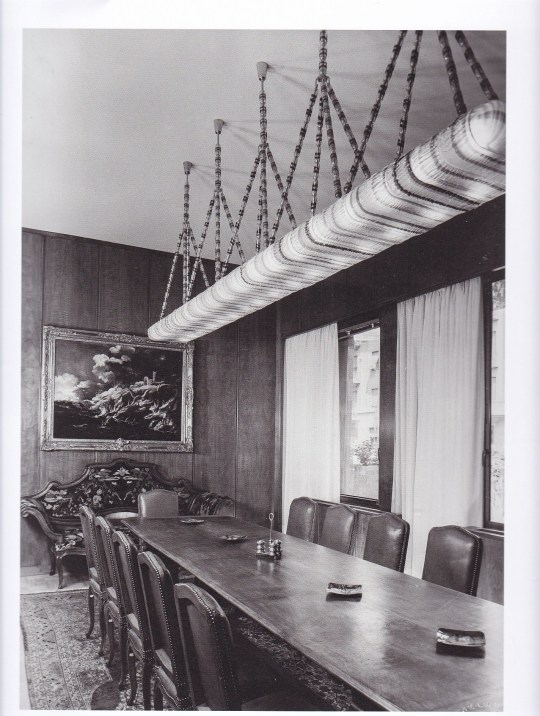


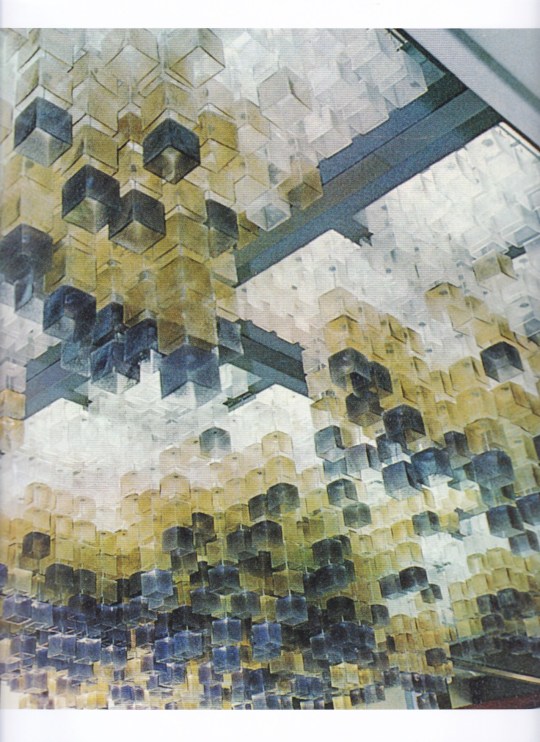
Venini Luce 1921 -1985
a cura di Marino Barovier, Carla Sonego
Skira, Milano 2022, 640 pagine, Rilegato, 31,8 x 29,9 cm, ISBN 9788857248691
euro 75,00
email if you want to buy :[email protected]
L'attività della vetreria Venini nel campo dell'illuminazione, dalla piccola alla grande scala, in un excursus attraverso gli interventi più significativi. Un ambito rilevante della produzione vetraria muranese è rappresentato dall'illuminazione sia per uso domestico che per grandi ambienti pubblici e privati, dai palazzi ministeriali agli uffici postali, dai teatri agli alberghi. La Venini si è distinta con risultati ragguardevoli anche in questo settore grazie alla sua capacità di costante aggiornamento e alla sua caratteristica apertura verso il mondo del progetto, aspetti questi che l'hanno fatta diventare un punto di riferimento per i più importanti architetti sia del panorama nazionale sia internazionale. Il volume, che copre un arco temporale dal 1921 al 1985, illustra il lavoro della vetreria nel campo dell'illuminazione, dalla grande alla piccola scala, tracciando un excursus attraverso gli interventi più significativi. Più di cinquecento schede, corredate da un considerevole apparato iconografico per lo più inedito, documentano un'attività incessante fatta di numerosi progetti di rilievo storico e culturale, tra cui quelli in collaborazioni con Angiolo Mazzoni negli anni trenta, la realizzazione del velario di Palazzo Grassi a Venezia nel 1951, la grande installazione di Carlo Scarpa per Italia 61 a Torino, il teatro di Fulda in Germania nel 1978 etc. Un'accurata selezione di opere racconta invece la trasformazione delle lampade Venini, della loro forma e della loro materia: dalla raffinata rielaborazione del tradizionale lampadario a bracci ai nuovi apparecchi a elementi modulari, da Vittorio Zecchin a Carlo Scarpa, da Massimo Vignelli a Ludovico Diaz de Santillana. Il volume, con materiali provenienti dall'archivio storico Venini per lo più inediti, è corredato inoltre da un ricco apparato documentario, composto da un consistente corpus grafico (disegni di catalogo, disegni preparatori per il Catalogo Blu e le pagine del Catalogo Rosso), per un totale di oltre quattrocento immagini che contribuiscono a narrare la straordinaria storia della Venini.
01/12/22
orders to: [email protected]
ordini a: [email protected]
twitter: @fashionbooksmi
instagram: fashionbooksmilano, designbooksmilano tumblr: fashionbooksmilano, designbooksmilano
#Venini Luce#vetreria Venini#illuminazione#1921-1985#500 schede#Vittorio Zecchin#Carlo Scarpa#Massimo Vignelli#Catalogo Blu#Catalogo Rosso#design books#designbooksmilano#fashionbooksmilano
18 notes
·
View notes
Text
Venini - Luce 1921 – 1985: Venedig bis 08.01.2023
Venini – Luce 1921 – 1985: Venedig bis 08.01.2023
Die Herbstausstellung “Venini: Licht 1921 – 1985”, kuratiert von Marino Barovier, will die Tätigkeit der Glashütte im Bereich der Beleuchtung vom kleinen bis zum großen Maßstab erkunden und ihre bedeutendsten Projekte vorstellen.
Einer der wichtigsten Bereiche der Glasproduktion in Murano ist seit jeher die Beleuchtung, sowohl für den häuslichen Gebrauch als auch für große öffentliche und private…
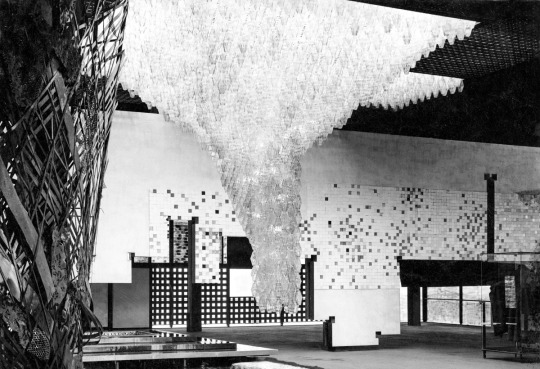
View On WordPress
#Beleuchtung#Carlo Scarpa#Gasbläser#Glas#Glashütte#Glasproduktion#Installationen#Lampen#Luce 1921 . 1985#Marino Barovier#Murano#Stanze del Vetro#Venezia#Venini
0 notes
Text
Atrocity created by CAPITALISM
Irish Famine (1845-1852)
Indian Famines during British colonial rule (Various, 18th-20th centuries)
Indigenous Genocide (Ongoing since colonization)
Slavery (16th-19th centuries)
Indonesian Genocide (1965-1966)
Pinochet Dictatorship (1973-1990)
Argentina Dictatorship (1976-1983)
Brazilian Dictatorship (1964-1985)
Pakistan Incident (Bangladesh Genocide, 1971)
The Gilded Age (Late 19th century)
The Great Depression (1929-1939)
Operation Condor (1960s-1980s)
Banana Wars (Early 20th century)
Batista Dictatorship (1952-1959)
Guantanamo Bay (Ongoing since 2002)
Vietnam War (1955-1975)
My Lai Massacre (1968)
Sinchon Massacre (Korean War, 1950-1953)
Kent State Massacre (1970)
Patriot Act (2001)
Red Summer (1919)
Jim Crow (Late 19th-20th centuries)
MK Ultra (1950s-1970s)
1985 MOVE bombing (1985)
1921 Battle of Blair Mountain (1921)
Malayan Emergency (1948-1960)
Mau Mau Rebellion (1952-1960)
Covert war in Yemen (Ongoing)
Stanley Meyer incident (1998)
Genocide in Turkey (Armenian Genocide and others, WWI era)
Congolese Genocide (Late 19th-20th centuries)
Greek Civil War (1946-1949)
Invasion of Cyprus by Turkey (1974)
Washita River Massacre (1868)
Minamata Disaster (1950s-1960s)
Bhopal Disaster (1984)
Kentler Project (1960s-2003)
Thomas Midgley Jr. and leaded gasoline (Early 20th century)
Forced labor in private US prisons (Ongoing)
Collateral murder in Iraq (2010)
Julian Assange and leaks (Ongoing)
US drone strikes (Ongoing)
US sanctions (Ongoing)
US support for dictatorships (Ongoing)
Korean War and civilian casualties (Korean War, 1950-1953)
Nazi funding and collaboration (WWII era)
Hitler and "Judeo-Bolshevism" (WWII era)
#communism#anarchism#marxism leninism#marxism#leftism#socialism#politics#american politics#government#republicans#us politics#conservatives#capitalism#social issues#poverty#anti capitalism#late stage capitalism#eat the rich#leftist#corporate greed#fuck capitalism#kill the rich#eat the fucking rich#fuck billionaires
368 notes
·
View notes
Text

Ruth Orkin (September 3, 1921 – January 16, 1985), People Lying on Tanglewood Lawn, Lenox, Massachusetts, 1948.
2K notes
·
View notes
Text

Father and son, London, 1951 - by Ruth Orkin (1921 - 1985), American
190 notes
·
View notes
Text
Leftists and activists I follow have said to be careful because the government can see how it's losing the propaganda war.
And that the only way to beat a propaganda war is to stop using fake propaganda. But who's dumb enough to actually threaten the USA so they have something real to threaten us with? The answer is unsurprising.
The USA.
So I've been hearing that our government would probably plan an attack on its own soil. If it meant putting the American people back in their place and restoring the security of billionaire bank accounts? Absolutely.
Y'all gotta be fucking kidding me.
And it looks like they have targets.
And before you say "the government wouldn't do that"
#look up 9/11#the geo-political conditions for the US president were damn near identical to what they are now#i imagine career politicians would see that and see an easy way to restore patriotism since thats what happened last time
77 notes
·
View notes
Photo
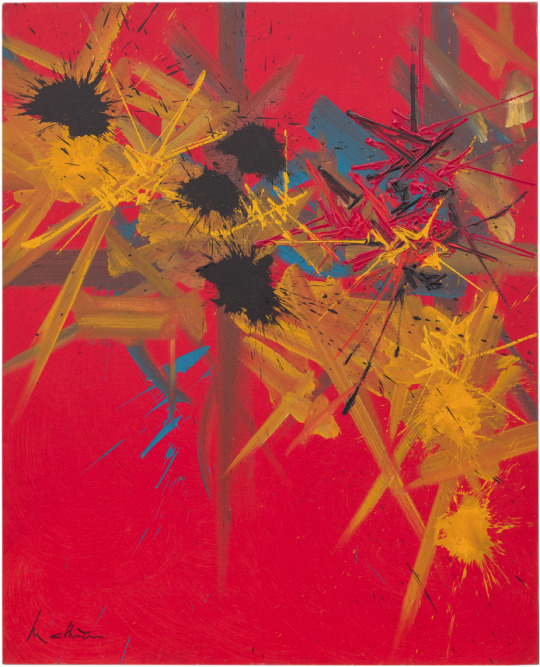
Georges Mathieu (French, 1921–2012), Creux Amers (Bitter Hollows), 1985, 100 x 81 cm
192 notes
·
View notes
Note
A while ago while I was in tumblr jail, you posted that you had a masters in science fiction literature (unless you didn't, I have been known to be mistaken), and I am wondering, what do you consider 'important' works of science fiction? Like the science fiction literary canon? I am so curious. Feel free to ignore, I will not harass you.
Yes! I do. I can tell you the ones that I was assigned (I'm afraid that the list skews extremely male and (especially) white).
Mary Shelley, Frankenstein (1818)
Olaf Stapledon, Last and First Men (1930) and Star Maker (1937) [You can probably add Odd John (1935) to this list]
Jules Verne, Journey to the Centre of the Earth (1864) and 20,000 Leagues Under the Sea (1870) [You can probably add From the Earth to the Moon (1865)]
H.G. Wells, The Time Machine (1895) and War of the Worlds (1897) [Though you can probably go ahead and add The Island of Doctor Moreau (1896), The Invisible Man (1897) and The First Men in the Moon (1901)]
Charlotte Perkins Gilman, Herland (1915)
Catherine Burdekin (writing as Murray Constantine), Swastika Night (1937)
Karel Čapek, R.U.R. (1920)
Isaac Asimov, I, Robot (1950) [You can probably add the first three Foundation novels here as well]
Yevgeny Zamyatin, We (1921)
George Orwell, Nineteen Eighty-Four (1949)
Arthur C. Clarke, 2001: A Space Odyssey (1967) and Rendezvous with Rama (1973) [Add: Childhood's End (1953) and The Fountains of Paradise (1979)
John Wyndham, Day of the Triffids (1951) [add: The Chrysalids (1955) and The Midwich Cuckoos (1957)]
H.P. Lovecraft, "The Call of Cthulhu" (1926) [add The Shadow over Innsmouth (1931)]
Richard Matheson, I Am Legend (1954)
Alfred Bester, The Stars My Destination (1956)
Robert Heinlein, Starship Troopers (1959) [Probably Stranger in a Strange Land (1961) and The Moon is a Harsh Mistress (1966) too, depending on, you know, how much of Heinlein's bullshit you can take]
J.G. Ballard, The Drowned World (1962) [Also, The Burning World (1964) and The Crystal World (1966)]
Phillip K. Dick, The Man in the High Castle (1962) [Also Do Androids Dream of Electric Sheep? (1968) and several of his short stories]
Frank Herbert, Dune (1965)
Michael Moorcock, Behold the Man (1969)
Kurt Vonnegut, Slaughterhouse-5 (1969)
Ursula Le Guin, The Dispossessed (1974) [Also The Lathe of Heaven (1971) and The Left Hand of Darkness (1969)]
Brian Aldiss, Supertoys series
William Gibson, Neuromancer (1984)
Kim Stanley Robinson, Red Mars (1992) [Also Green Mars and Blue Mars]
They also included Iain M. Banks's The Algebraist (2004), but I personally think you'd be better off reading some of his Culture novels
Other ones that I might add (not necessarily my favourite, just what I would consider the most influential):
Joe Haldeman, The Forever War (1974)
Matsamune Shiro, Ghost in the Shell (1989-91)
Katsuhiro Otomo, Akira (1982-1990)
Octavia Butler, Lilith's Brood (1987-89) and Parable of the Sower (1993)
Poul Anderson, Operation Chaos (1971)
Hector Garman Oesterheld & Francisco Solano Lopez, The Eternaut (1957-59)
Liu Cixin, The Three-Body Problem (2008)
Robert Shea and Robert Anton Wilson, The Illuminatus! Trilogy (1975)
William Hope Hodgson, The House on the Borderland (1908)
Neal Stephenson, Snow Crash (1992)
Joanna Russ, The Female Man (1975)
Orson Scott Card, Ender's Game (1985) [Please take this one from a library]
Edgar Rice Burroughs, A Princess of Mars (1912)
Margaret Atwood, The Handmaid's Tale (1985) and Oryx and Crake (2003)
Aldous Huxley, Brave New World (1932)
Osamu Tezuka, Astro Boy (1952-68)
Ray Bradbury, Fahrenheit 451 (1953)
Madeleine L'Engle, A Wrinkle in Time (1962)
Walter M. Miller, A Canticle for Leibowitz (1959)
Douglas Adams, Hitchhiker's Guide to the Galaxy (1979)
113 notes
·
View notes
Text
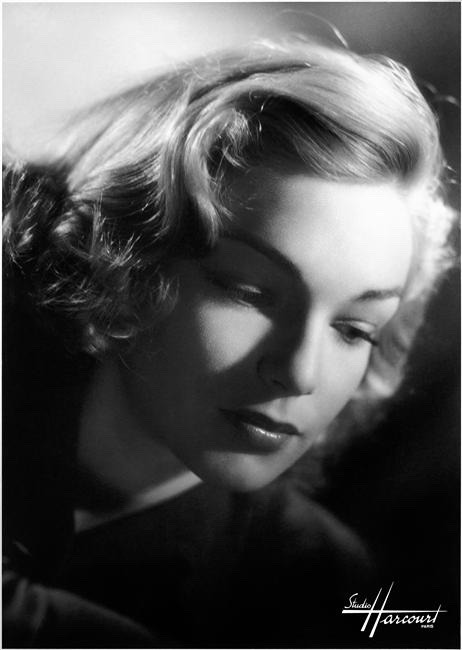

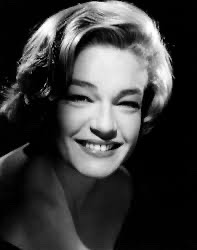
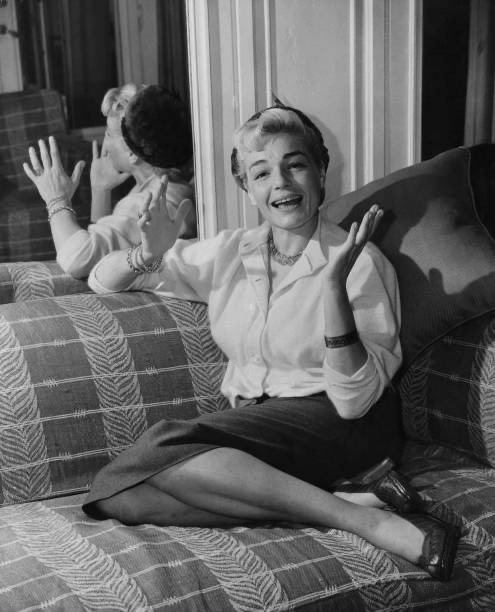
Simone Signoret (March 25, 1921 – September 30, 1985)
31 notes
·
View notes
Text

Nikolay Grishin (USSR, 1921-1985). Nude (1950s).
18 notes
·
View notes
Text
WC Skyfall AU Timeline: From The Skyfall to The Light in the Mist
This is a draft timeline for the Skyfall AU outline. All dates are approximate and subject to change.
Winter 1920 - Skyclan is exiled from the forest after human settlement drives them from their home territory. The remaining clans refuse to aid the homeless clan and Skyclan leaves the forest. Only Birdflight, the mate of Cloudstar of Skyclan, and their kittens remain behind. Skyclan vows to never turn to Starclan again, causing the formation of the Skypaws, which becomes Skyclan's ancestral skies.
Spring 1921 - Skyclan arrives at the gorge. Cloudstar dies soon after, the stress of the events in the forest and the subsequent journey catching up to him. Buzzardstar is named leader.
1938-1940 - The Thunderclan Civil War fought between the Cloudstar and Redstar's descendants within Thunderclan. The result is the death of many warriors and the Thunderclan leader (and Cloudstar descendant), Yarrowstar, and the formation of the Skybloods as a group within Thunderclan.
Summer 1950 - Amberstar of Thunderclan becomes the first true Skyblood leader of Thunderclan. Her descendants (Birdstar, Oakstar, Pinestar, Tigerstar of Shadowclan, and Bramblestar) would lead Thunderclan for the majority of the next several decades.
1958 - Birdstar of Thunderclan and Frondstar of Shadowclan begin leading raids into the town, kidnapping kits in the process. These raids would continue through the reigns of the leaders' successors Oakstar and Houndstar.
1975 - Mapleshade's Vengeance takes place. Darkstar of Riverclan, upset at Oakstar for damning the kittens along with the mother, adds a law to the warrior code: Kittens are to be protected, regardless of their origins or the actions of their kin.
"Mapleshade may have been the one to bring those kittens to the river, but they would not have been there had it not been for your rashness, Oakstar. Kittens are not to be blamed for the actions of their kin."
1984 - Pinestar's Choice begins
1985 - Doestar of Thunderclan ends the raids on the town and establishes friendly, although fragile, relations with the cats of the town.
1986 - Goosefeather's Curse begins [this may be scrapped-- I am not a big fan of this novella or it's implications for future events]
1989 - Yellowfang's Secret and Tallstar's Revenge begin
1991 - Pinestar becomes leader of Thunderclan
1994 - Bluestar's Prophecy and Crookedstar's Promise begin
1996 - Pinestar leaves Thunderclan to become a house-cat, abandoning his family in the process. Leopardfoot, his ex-mate, suggests a new law for the code in her anger: A noble warrior rejects the life of a house-cat and will lay down their life in service of their clan
1997 - Tallstar becomes leader of Windclan and Leopardstar's Honor begins.
Winter 1998 - Blueflame [Bluefur/Bluestar] gives birth to Mistykit, Stonekit, and Mosskit in Thunderclan. Mistykit and Stonekit are given to their father, Oakheart of Riverclan, while Mosskit passes away on the trip to the river. Blueflame is named deputy of Thunderclan.
2000 - Redtail's Debt and Spottedleaf's Heart begin. Crookedstar becomes leader of Riverclan.
2001 - Bluestar becomes leader of Thunderclan.
Spring 2003 - Rusty the Kittypet joins Thunderclan as Firepaw. Windclan is driven from the forest by Brokenstar.
Summer 2003 - Brokenstar is driven out of Shadowclan.
Early Fall 2003 - Fireheart and Graystripe help bring Windclan home after they are driven out by Brokenstar.
2005 - Tigerclaw is exiled from Thunderclan. Fireheart is named deputy of Thunderclan.
2006 - Firestar becomes leader of Thunderclan. The Darkest Hour takes place.
2007 - Firestar's Quest takes place. Skyclan is re-established in the gorge, albeit with very different structure from the Forest Four due to a prolonged time apart. Leafstar is made leader of the newly refounded clan, with Sharpclaw as her deputy and Echosong as her cleric.
2008 - The New Prophecy begins
2009 - the clans arrive at The Lake. Leafpool discovers the Moonpool
2009 - Windclan Civil War takes place after Tallstar's death. Peatstar [Onestar] is named leader of Windclan.
2010 - Leopardstar passes away and Mistystar becomes leader of Riverclan.
2011 - The Three are born to Leafpool of Thunderclan. Her sister, Squirrelflight, adopts the kittens and presents them to the clan as her own. In reality, Lionkit is the son of Leafpool and Mothwing of Riverclan while Jaykit and Hollykit are the kits of Leafpool and Crowfeather of Windclan.
2013 - The Battle of the Eclipse takes place.
Spring 2014 - Hollyleaf reveals the truth of the Three's parentage at a gathering and murders Ashfur before fleeing into the tunnels.
Summer 2014 - The Fourth Apprentice takes place.
Summer 2016 - The Battle of the Dark Forest takes place. Blackstar of Shadowclan dies in the battle and Tawnystar becomes leader of Shadowclan. Firestar of Thunderclan also dies in the battle and Bramblestar becomes leader of Thunderclan.
2018 - The Apprentice's Quest takes place
2019 - Darktail and The Kin arrive at the Lake
Fall 2019 - Tawnystar is killed attempting to drive Darktail away from the lake. Shadowclan is temporarily leaderless.
2020 - Darktail is killed by his estranged father, Peatstar. Harestar becomes leader of Windclan and Goldenstar becomes leader of Shadowclan.
2021 - Lost Stars takes place.
2022 - Ashfur is defeated. A shaken Bramblestar steps down from leadership and Squirrelstar becomes leader of Thunderclan.
-----------
A few notes to make:
Bluefur is now Blueflame
Tigerheart is now Goldenheart (I hated that he was named Tiger to begin with)
Squirrelstar becomes leader several books earlier
The prequels have been shuffled around a little bit in order to better match the cats ages in TPB
Leader deaths have been moved around a lot on the timeline. Some leaders live wayyyyyy too long
I added a large time period between Cloudstar's Journey and Mapleshade's Vengeance. The clans need time to forget that Skyclan existed.
Please let me know if I have made any glaring mistakes in terms of seasons -- I haven't re-read any books recently other than The Prophecies Begin, which I read a few weeks ago. I am mostly relying on my memory of the books, knowledge gained from tumblr, and the wiki.
I likely won't do a ton of work on anything past OotS, since that is the last arc I fully read when I was reading the books as a teenager.
A timeline for DotC through to The Skyfall will be posted eventually
17 notes
·
View notes
Text
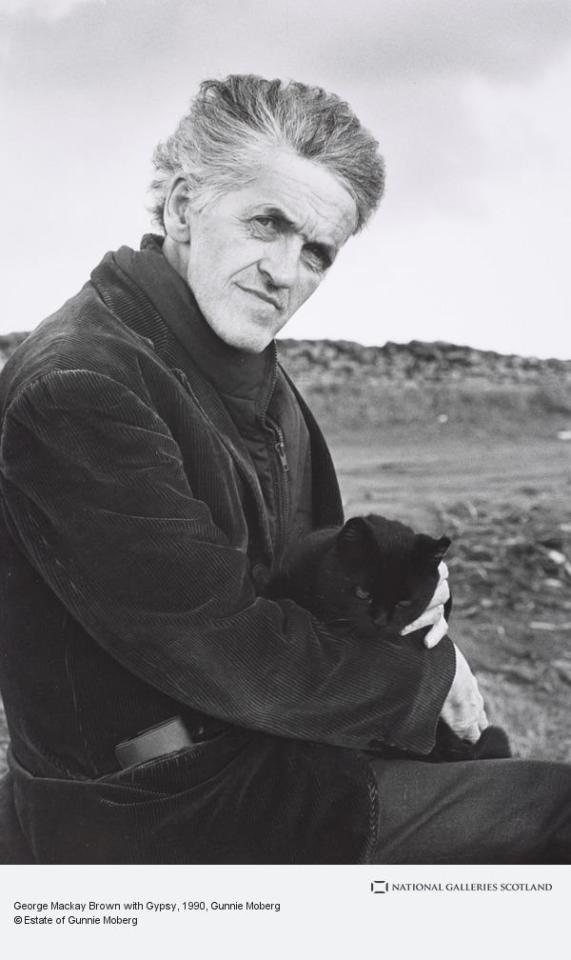
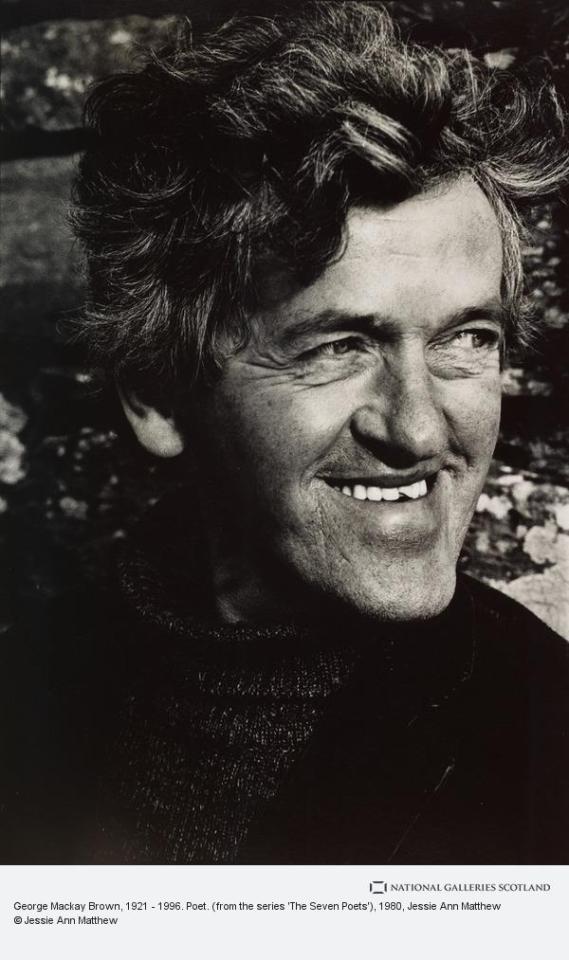
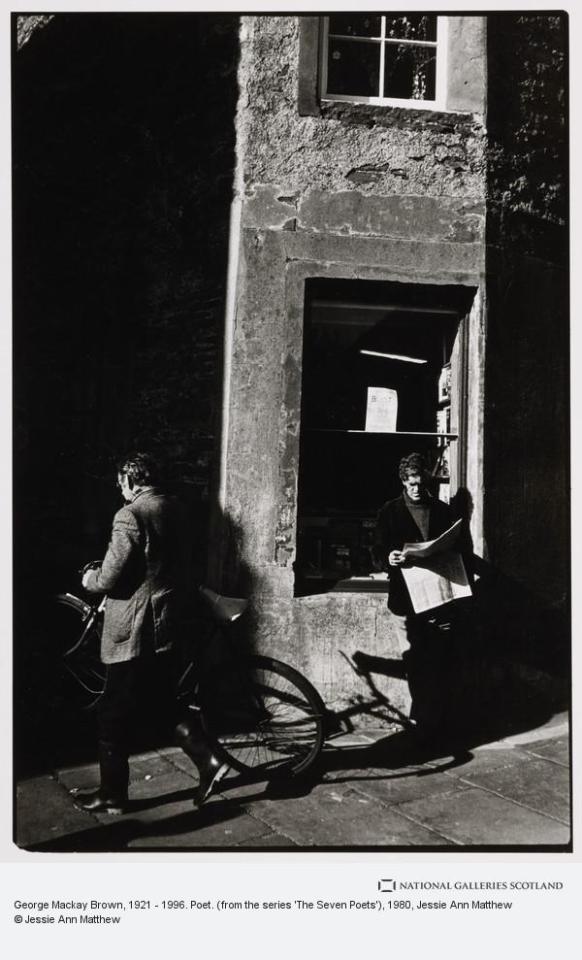

April 13th 1996 saw the death of the Orkney Poet and writer George Mackay Brown.
George Mackay Brown is perhaps Orkney’s best known author. He was born in Stromness in 1921 and his poetry, plays, novels and short stories continue to have an impact worldwide.
His work was inspired by Orcadian folklore – the myths, legends and sagas - Orkney’s Norse heritage, the natural landscape, his childhood and exploration of his faith. He wrote about his hometown of Stromness and chronicled the lives of the people who lived here and the way of life.
After six years as the Stromness correspondent for the Orkney Herald and a period recovering from tuberculosis, GMB, as he is often referred to in Orkney, from 1951 studied at Newbattle College in Midlothian under warden Edwin Muir, a fellow Orcadian writer. He went on to read English at Edinburgh University, returning to Orkney in 1961.
While in Edinburgh of course he drifted towards the crowd in Milnes Bar and into the company of Hugh MacDiarmid, Norman MacCaig and the likes. He met and fell in love with Stella Cartwright described as the bars muse and she was lover to a number of Scottish poets, they were briefly engaged but kept in touch until she passed away in 1985.
Dubbed by some as the Orkney bard, his first book of poems sold out in days. Despite almost continual ill-health he continued to write and gained numerous prizes for his work. These included the James Tait Memorial Prize for his novel The Golden Bird: Two Orkney Stories. Beside the Ocean of Time was shortlisted for the Booker Prize and won the Scottish Book of the Year title from the Saltire Society. He was awarded the OBE and three honorary degrees.
His weekly column which ran for more than 25 years in The Orcadian from 1971 is in print in book form and gives an insight into his Stromness routines and his observations on a changing Orkney.
George Mackay Brown died in 1996 but his legacy lives on in his words, and in the George Mackay Brown Fellowship.
The Poet
Therefore he no more troubled the pool of silence.
But put on mask and cloak,
Strung a guitar
And moved among the folk.
Dancing they cried,
‘Ah, how our sober islands
Are gay again, since this blind lyrical tramp
Invaded the Fair!’
Under the last dead lamp
When all the dancers and masks had gone inside
His cold stare
Returned to its true task, interrogation of silence.
George Mackay Brown
8 notes
·
View notes
Text
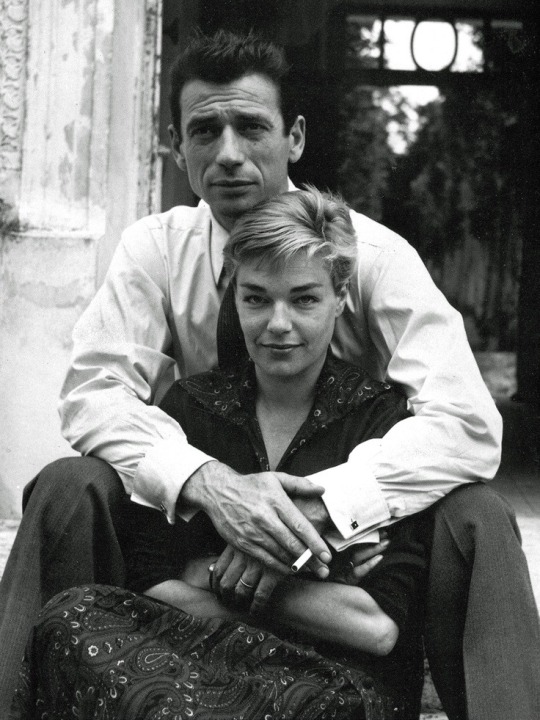
Simone Signoret, March 25, 1921 – September 30, 1985.
With Yves Montand.
36 notes
·
View notes
Photo
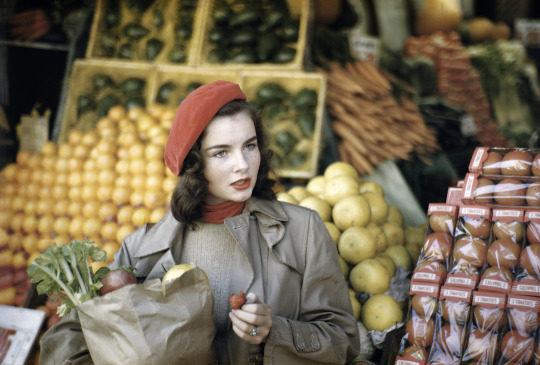
Geraldine Dent, New York City, 1949 - by Ruth Orkin (1921 - 1985), American
169 notes
·
View notes
Text
Oscar Nominee of All Time Tournament: Round 1, Group A
(info about the nominees under the poll)


SIMONE SIGNORET (1921-1985)
NOMINATIONS:
Lead- 1965 for Ship of Fools
WINS:
Lead- 1959 for Room at the Top
--
MICHAEL DOUGLAS
WINS:
Lead- 1987 for Wall Street
#oscars#academy awards#actors#film#simone signoret#michael douglas#ship of fools#ship of fools 1965#room at the top#room at the top 1959#wall street 1987#nominees group a#nominees group a polls#oscar winners
11 notes
·
View notes
Text
42 Ancient Medicinal Plant Remedies
The Lost Book Project is charging $14 for this collection. If you find this link roundup useful, please consider donating to Archive.org instead.
Other roundups here
Culpeper's Complete Herbal: Over 400 Herbs And Their Uses by N. Culpeper (1653)
A Garden of Herbs - E. Rohde (1921)
A Modern Herbal: The Medicinal, Culinary, Cosmetic, and Economic Properties, Cultivation, and Folklore of Herbs, Grasses, Fungi, Shrubs, and Trees with All Their Modern Scientific Uses by M. Grieve (1931)
Culinary Herbs - M. Kains (1912)
Fray's golden recipes for the use of all ages - E. Fray (1897)
Cunningham's Encyclopedia of Magical Herbs by S. Cunningham (1985)
THIS IS A RENTAL: BOOK IS STILL IN COPYRIGHT
Back to Eden by Jethro Kloss (1939)
THIS IS A RENTAL: BOOK IS STILL IN COPYRIGHT
Herbal Simples - Approved for Modern Uses of Cure - W. Fernie (1897)
Occult Science in Medicine by F. Hartmann (1893)
The Encyclopedia of Herbs and Herbalism by M. Stewart (1979)
A Compendium of General Botany - M. Westermaier (1896)
Ancient Cures, Charms, and Usages of Ireland; Contributions to Irish lore by L. Wilde (1890)
A complete dictionary of the whole materia medica containing an experimental history of every natural and artificial substance made use of in medicine Vol. 1 - W. Lewis (1810)
A complete dictionary of the whole materia medica containing an experimental history of every natural and artificial substance made use of in medicine Vol. 2 - W. Lewis (1810)
A curious herbal - containing five hundred cuts, of the most useful plants Vol. 1 by E. Blackwell (1737)
A curious herbal - containing five hundred cuts, of the most useful plants Vol. 2 by E. Blackwell (1737)
A family herbal or, Familiar account of the medical properties of British and foreign plants - R. Thornton (1814)
A supplement to the Pharmacopia, and treatise on pharmacology in general by S. F. Gray (1836)
A text-book of materia medica and therapeutics - characteristic, analytical, and comparative by A. C. Cowperthwaite (1891)
American medical botany being a collection of the native medicinal plants of the United States Vol. 1 by J. Bigelow (1817)
American medical botany being a collection of the native medicinal plants of the United States Vol. 2 by J. Bigelow (1817)
American medical botany being a collection of the native medicinal plants of the United States Vol. 3 by J. Bigelow (1817)
American medicinal leaves and herbs by A. Henkel (1911)
American root drugs by A. Henkel (1907)
An introduction to botany Vol. 1 - J. Lindley (1848)
An introduction to botany Vol. 2 - J. Lindley (1848)
An introduction to botany Vol. 3 - J. Lindley (1848)
An introduction to medical botany - T. Castle (1829)
Edible Wild Plants - P. Oliver (1899)
Flower-land - an introduction to botany - R. Fisher (1889)
Ginseng And Other Medicinal Plants - by A. R. Harding (1908)
Herbals, their origin and evolution, a chapter in the history of botany, 1470-1670 by A. Arber (1912)
How to grow vegetables and garden herbs - A. French (1911)
Illustrations of medical botany Vol. 1 by J. Carson (1845)
Illustrations of medical botany Vol. 2 by J. Carson (1845)
Magic plants - being a translation of a curious tract entitled De vegetalibus magicis by J. H. Heucher (1886)
Medicinal Herbs and Poisonous Plants by D. Ellis (1918)
New, Old, and Forgotten Remedies - E. Anschutz (1900)
Outlines Of Lessons In Botany Pt. 1 - J. Newell (1896)
Outlines Of Lessons In Botany Pt. 2 - J. Newell (1896)
The British Herbal by J. Hill (1756)
The Medicine-Men of the Apache by J. G. Bourke (1892)
The Mystery and Romance of Alchemy and Pharmacy by C. J. S. Thompson (1897)
The Occult Family Physician and Botanic Guide to Health by A. Matteson (1894)
#herbalism#green witchcraft#plant magic#beginner witch#witchcraft resources#Fuck profiteering nonsense websites stealing from people doing good work
24 notes
·
View notes